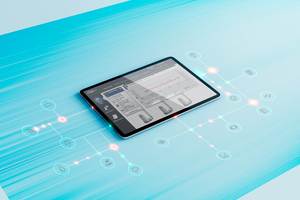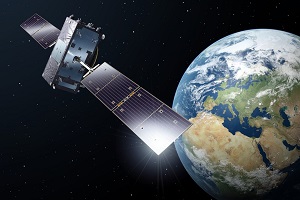Digital disruption has been bubbling in the water sector for some time. Now, it is accelerating. In a devastating year, says Al Cho, vice president and general manager of Xylem, one of the few positive developments to emerge from COVID-19 is the fast-tracking of our water infrastructure’s digital transformation.
As the coronavirus spread across the globe, frontline utility workers rallied to ensure continuity of service for their communities. Digital technologies proved to be a lifeline. Readily-available tools and technologies such as advanced metering infrastructure, real-time decision support systems, and digital asset management have enabled utilities to run large parts of their system remotely throughout the pandemic, avoiding costly downtime, protecting employees and ensuring communities are served during this critical time.
By contrast, utilities that have not yet invested in digital systems, and which rely on paper-based systems and workflows, have faced greater struggles, both operational and financial.
While industries like healthcare have leapfrogged into the 21st century through telehealth, our water and wastewater systems have lagged behind. COVID-19 is causing utility managers to rethink what’s possible in terms of digitalisation. Digital technologies once perceived as luxuries are now being recognised as a necessary part of prudent water management strategies, as utility leaders emerge from this crisis and build resilience for the future.
Digitally-enabled resilience
As the sector’s response to COVID-19 moves from survival to recovery mode, the impetus for digitalisation will be driven both by a desire for greater operational resilience but also the challenging economics of the post-coronavirus world.

The drinking water sector in America, for example, is estimated to lose nearly US$14 billion (€12 billion) approximately 17% in annualised revenue as a result of the pandemic, including more than $5 billion (€4 billion) in losses related to suspending water service disconnections and increased customer delinquencies.
U.S. wastewater utilities have seen a $12.5 billion (€10.9 billion) shortfall or about 20% average loss of revenue due to declines in usage from commercial and industrial users, restoration of service to delinquent ratepayers who cannot afford their bills, and a temporary halt on shutoffs due to non-payment.
These trends are replicated around the world. Without a structural shift in approach, our global water infrastructure faces continued decline. The economic fallout means that utilities have no choice but to adapt their processes.
Digital tools have the potential to remove pervasive inefficiency in capital programmes, and to revolutionise the sector in ways that will help to lead water utilities out of this crisis.
Digital decision support tools unlock the power of data to drive substantially greater efficiency. “Digital twins” driven by real time sensors mirror physical systems and can provide unprecedented foresight and control, especially when coupled with algorithms and control logic that optimise operational choices.
Utilities can deploy resilient sensor networks in critical locations to feed analytical models and decision engines, enabling them to focus scarce resources on targeted interventions, not crisis response.
By providing utility managers with real-time and predictive insights on the performance and the potential of their existing assets, decision intelligence tools enable utilities to optimise levels of service while significantly reducing the costs associated with maintenance and network optimisation strategies.

These solutions are empowering utilities the world over to deliver more with less. Cities that have invested in smart technologies are already seeing an impact. It’s how Evansville, a city in southwest Indiana, has reduced its sewer overflows by more than 100 million gallons every year for less than 5% of the next lowest cost solution, by making its sewers smarter, not bigger.
It’s how the city of South Bend, Indiana, is saving $500 million (€438 million) from a capital programme to manage its overflows while reducing overflows by 70%. And it’s how the sector is going to emerge from this crisis leaner and stronger than ever before.
Catalyst for change
The tools to realise this potential are readily available. In fact, they are rapidly becoming core to today’s most resilient utilities.
As water challenges continue to increase, putting further strain on ageing infrastructure, there is a growing realisation that ignoring the advantages of digitisation is now a dangerously risky strategy.
The coronavirus pandemic has laid bare the impossibility of business as usual during an unprecedented crisis, emphasizing the need for urgent structural change to mitigate the impact of a second or third wave and future proof the industry against mounting challenges.
By highlighting the true impact of long-term disruption, the pandemic could be the catalyst for a paradigm shift that has been years in the making, providing the impetus for enduring and widespread digital transformation in water utilities. Let’s make it happen. Let’s solve water.
The author is Al Cho, vice president and general manager of Xylem.
Comment on this article below or via Twitter: @IoTNow_OR @jcIoTnow










